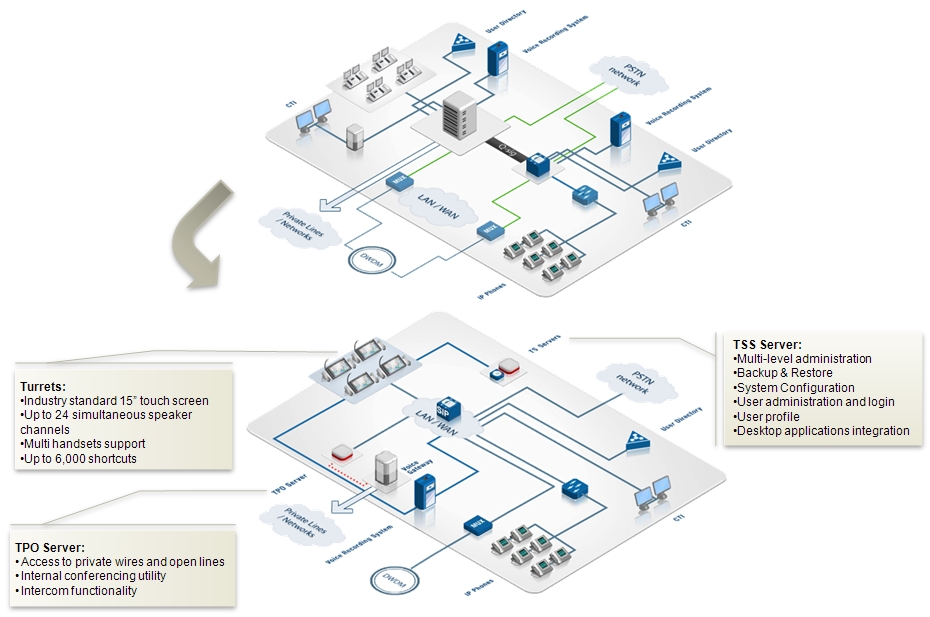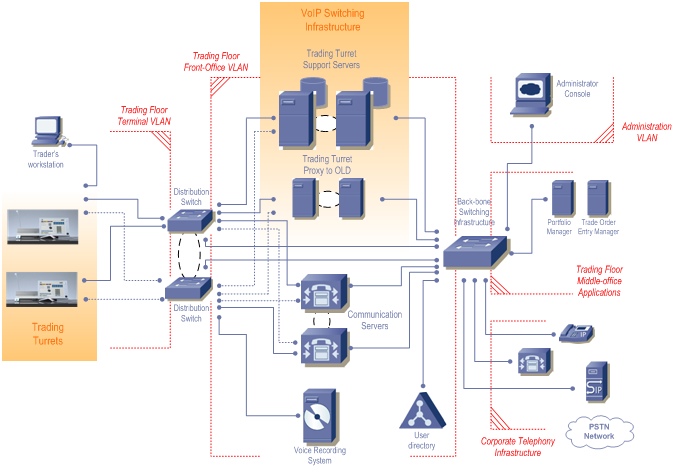When migrating to a full IP based system, the architecture of the trading infrastructure is drastically changed in the following manner:
The native IP layer allows to centralize all communications amongst a single telephony system; there is no need to maintain a dedicated PBX usually bound to a single site. Access to the Public Switched Telephony Network (PSTN) is also achieved by the same equipment, whether a call is destined to a trader or a back-office phones.
A large part of the new trading infrastructure is moving from physical to virtual. Infrastructure nodes can be hosted on virtualized servers located in difference and resilient data centers.
The end-user screen layout is versatile and adaptable to the specific needs of the trader. Markets upgrades or additional applications can be easily uploaded to an installed trading terminal.
Because the open standard TCP/IP protocol is used for all communications, the new trading system can benefit from the whole company data network (i.e. LAN/WAN/VPN). As a direct consequence, traders can work from any location (i.e. branch & home offices, disaster recovery seats) just like any other mobile worker of the company.

Migration path to a full IP-based Infrastructure
SIP endpoints which can have multiple handsets, speakers and mic; handles up to 32 channels simultaneously. There are a range of different devices to suit specific needs, along with different GUI’s.
A server providing access to security configuration (user access login), end-user profile & turrets management.
The TSS also acts as a bridge to middle-office applications (PIM Synchronization, corporate directory).
The core feature of the TPO is to provide dynamic conferencing for turrets, having full control over how different media streams are replicated to the conference participants. This capability is used to deliver the following services to the turrets: outside private lines (aka broker lines), shared DDI lines, advanced group intercoms & conferencing.

IP Trade Synoptic Architecture